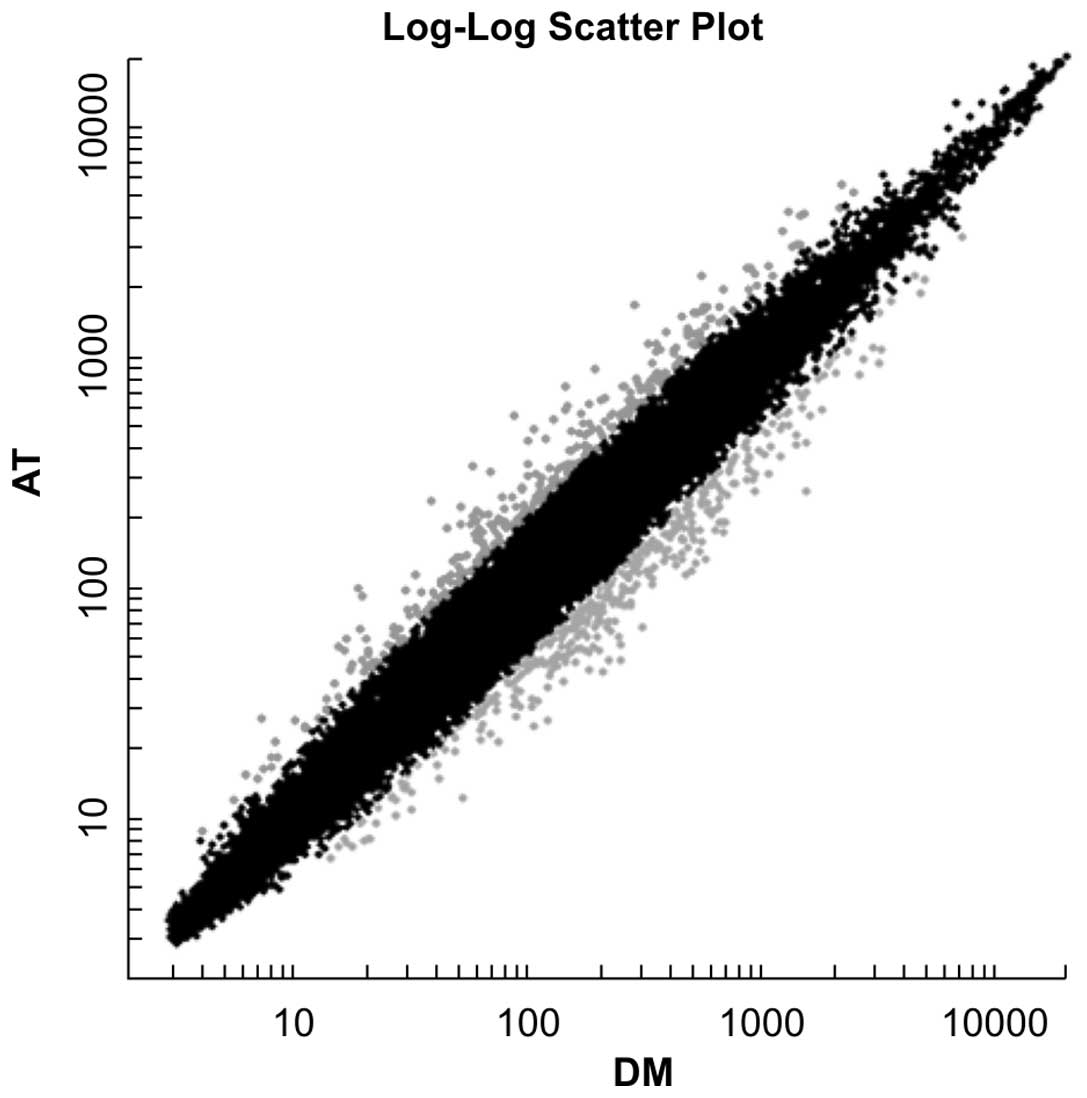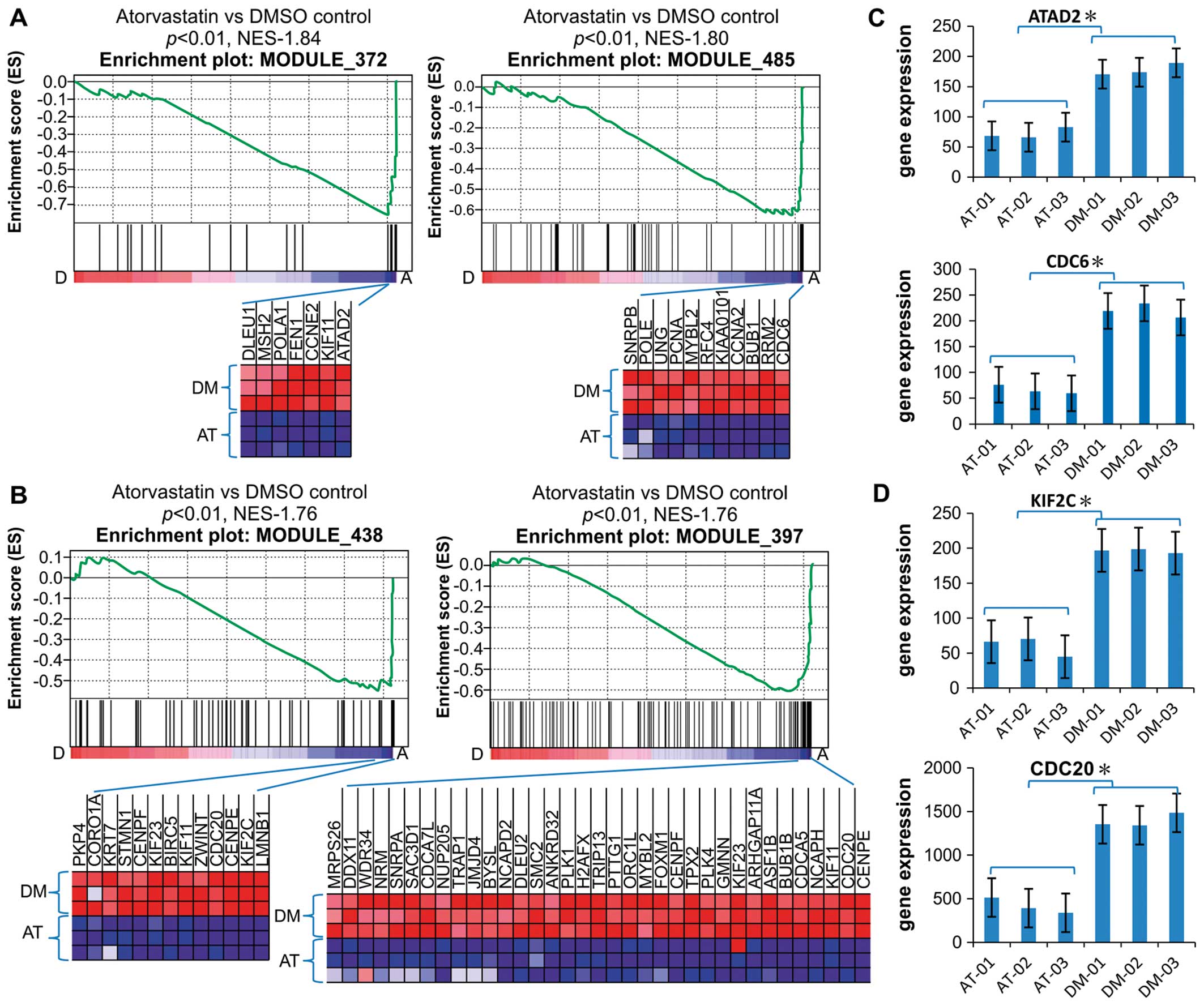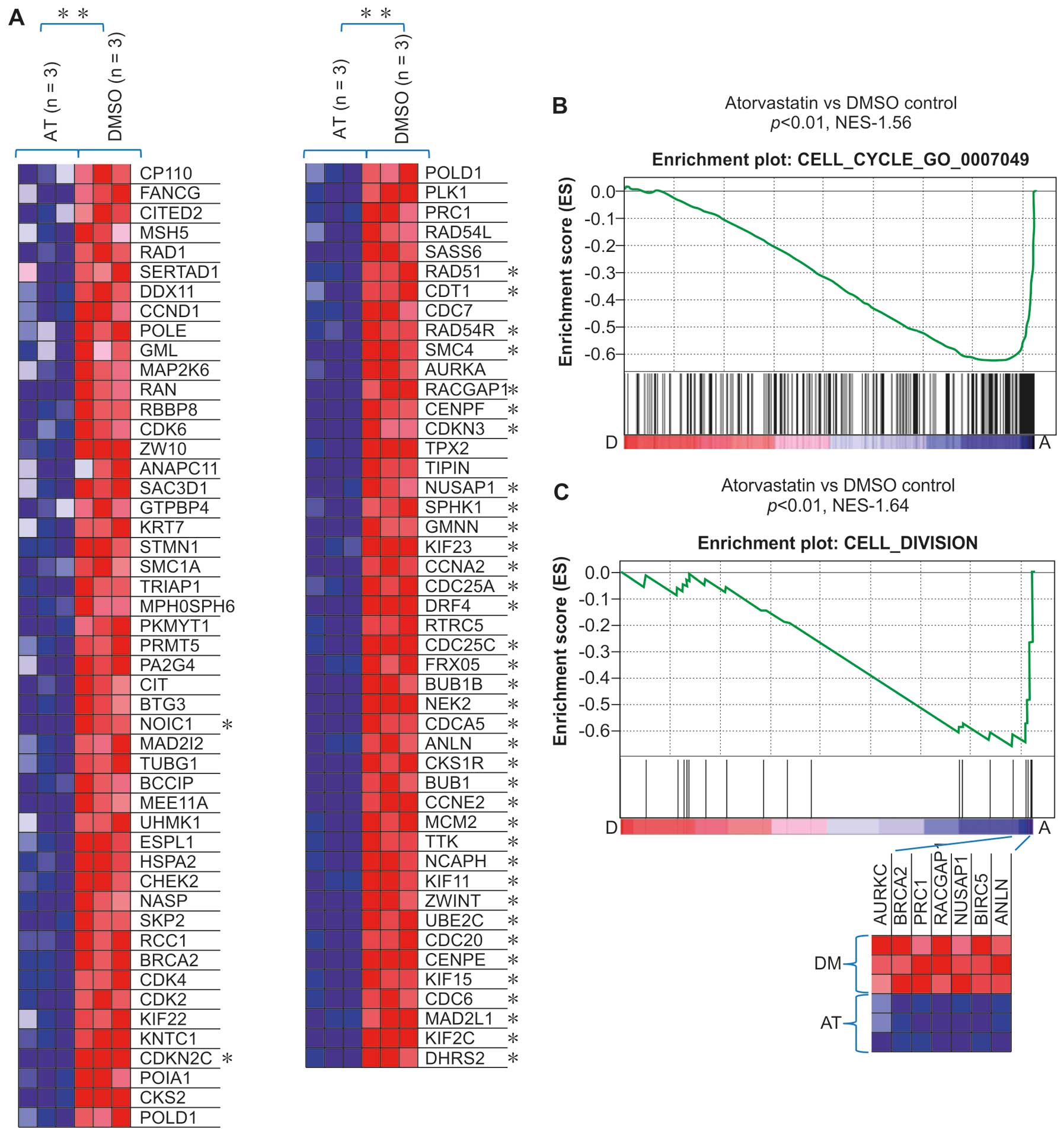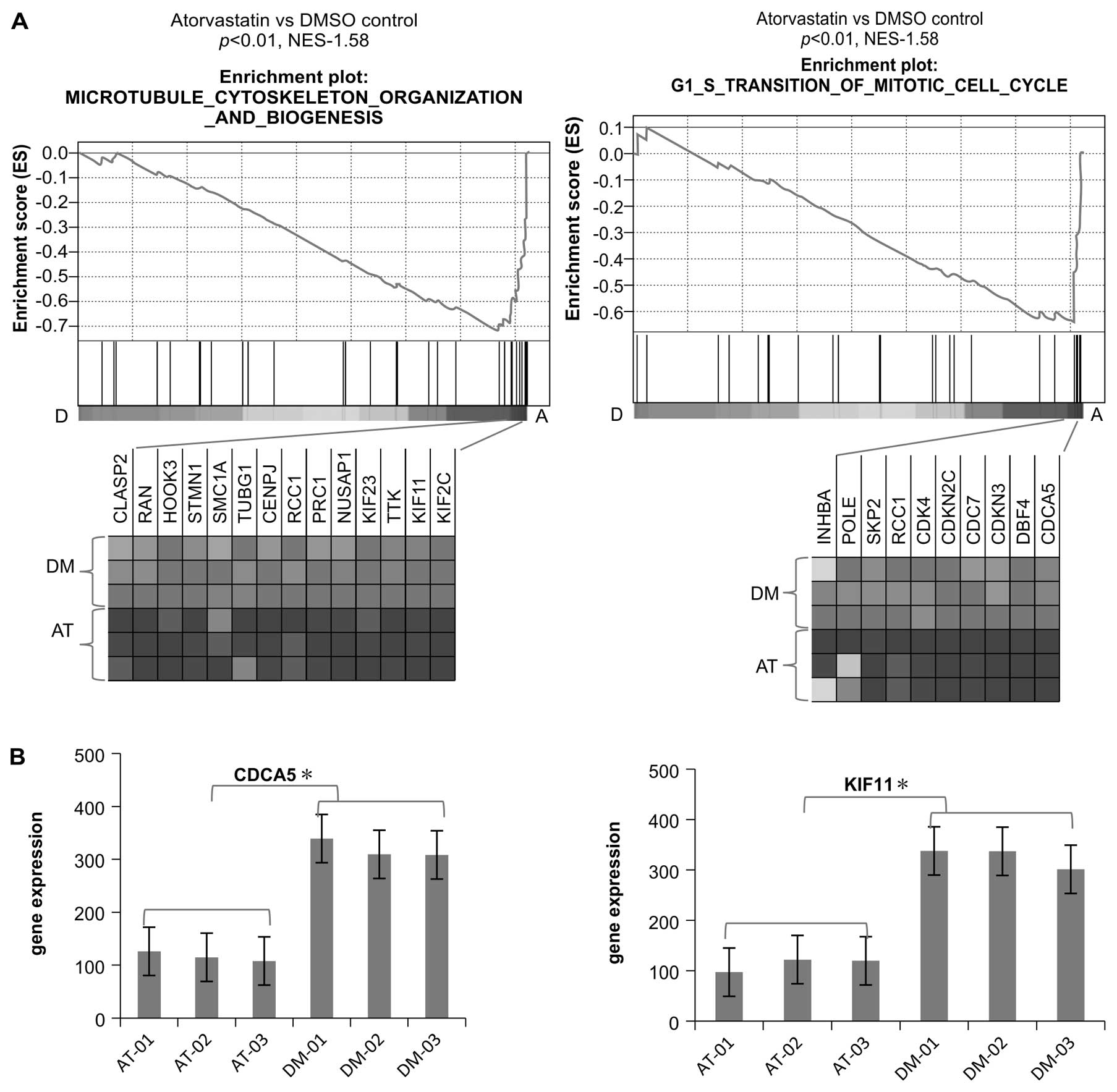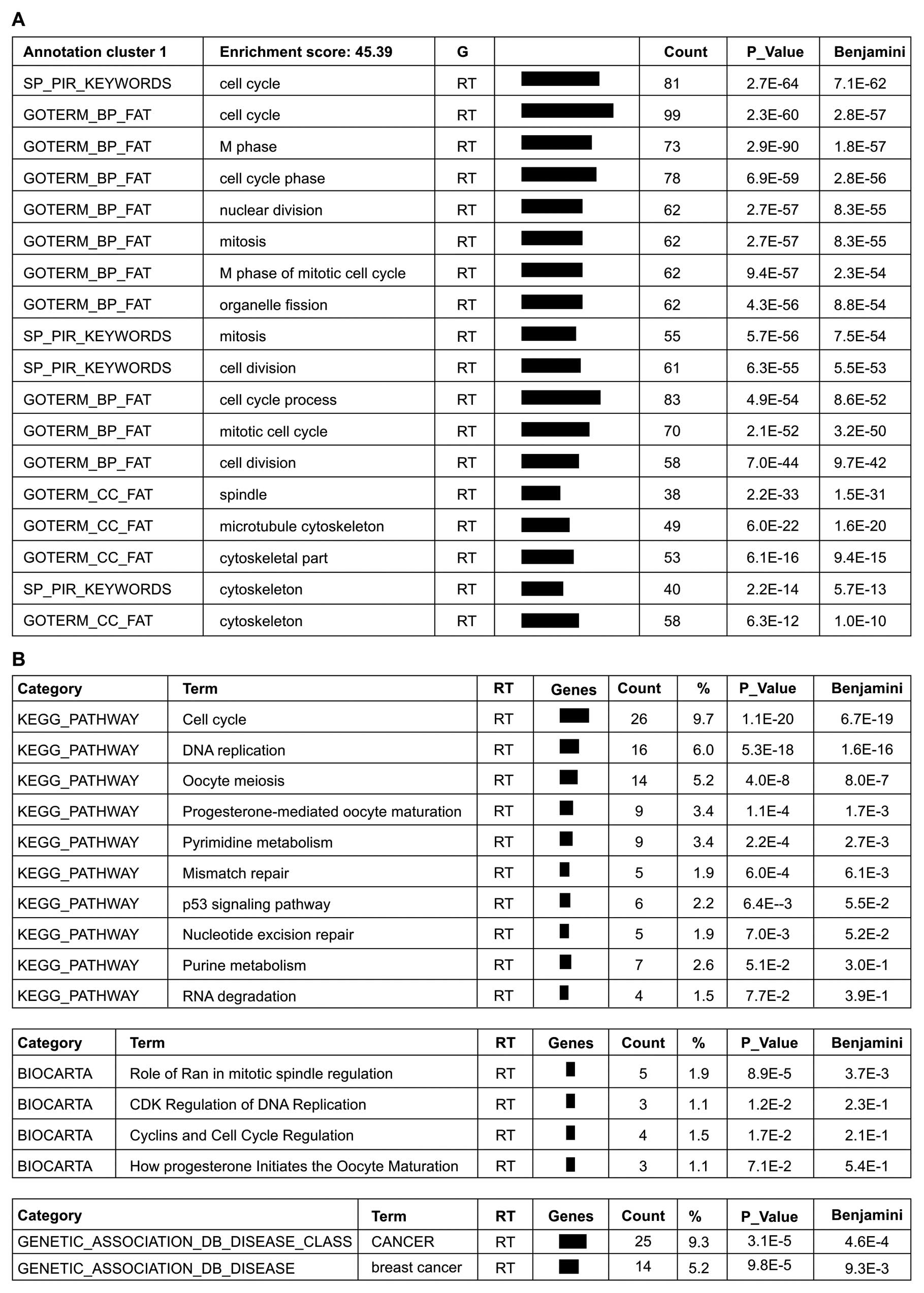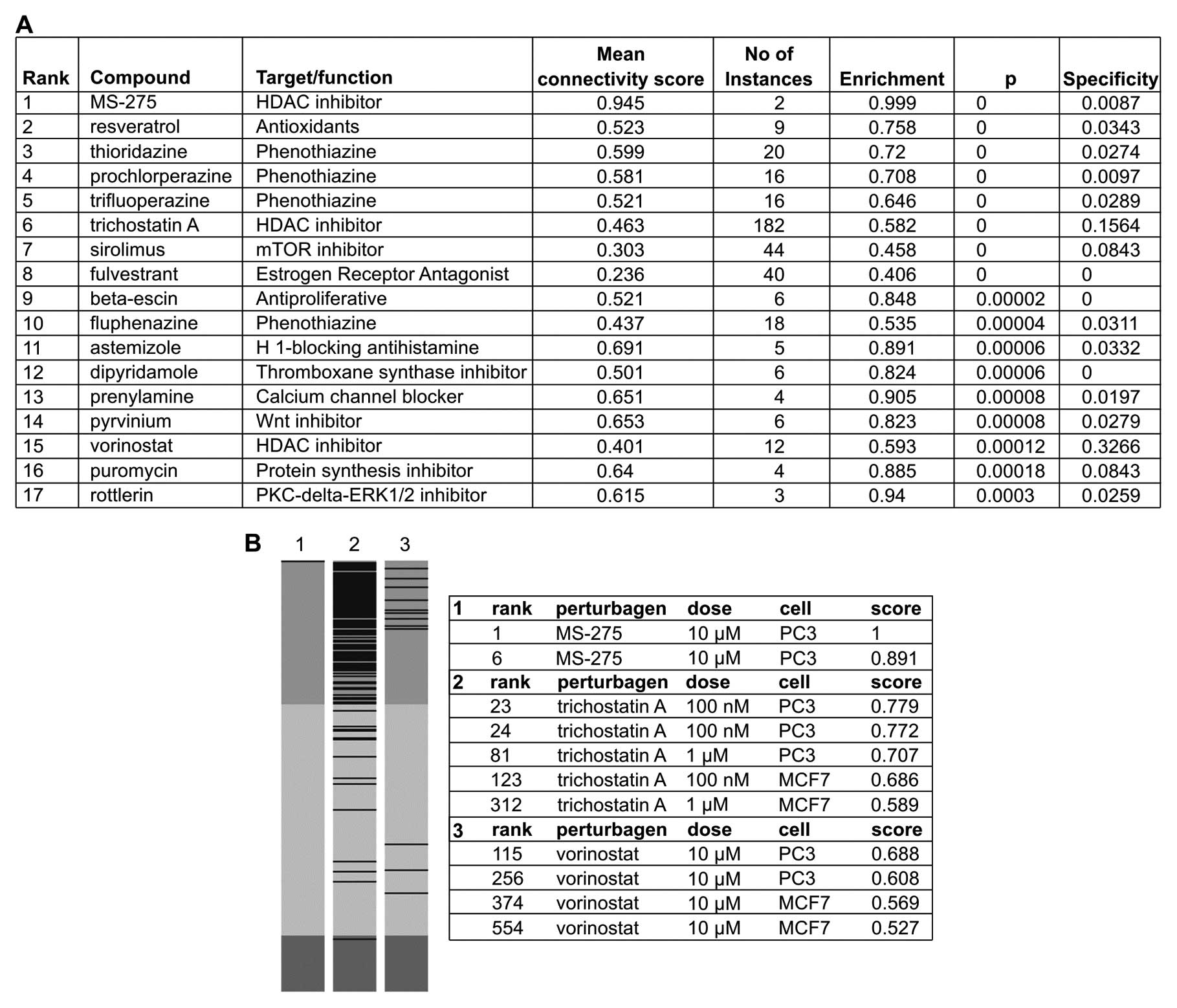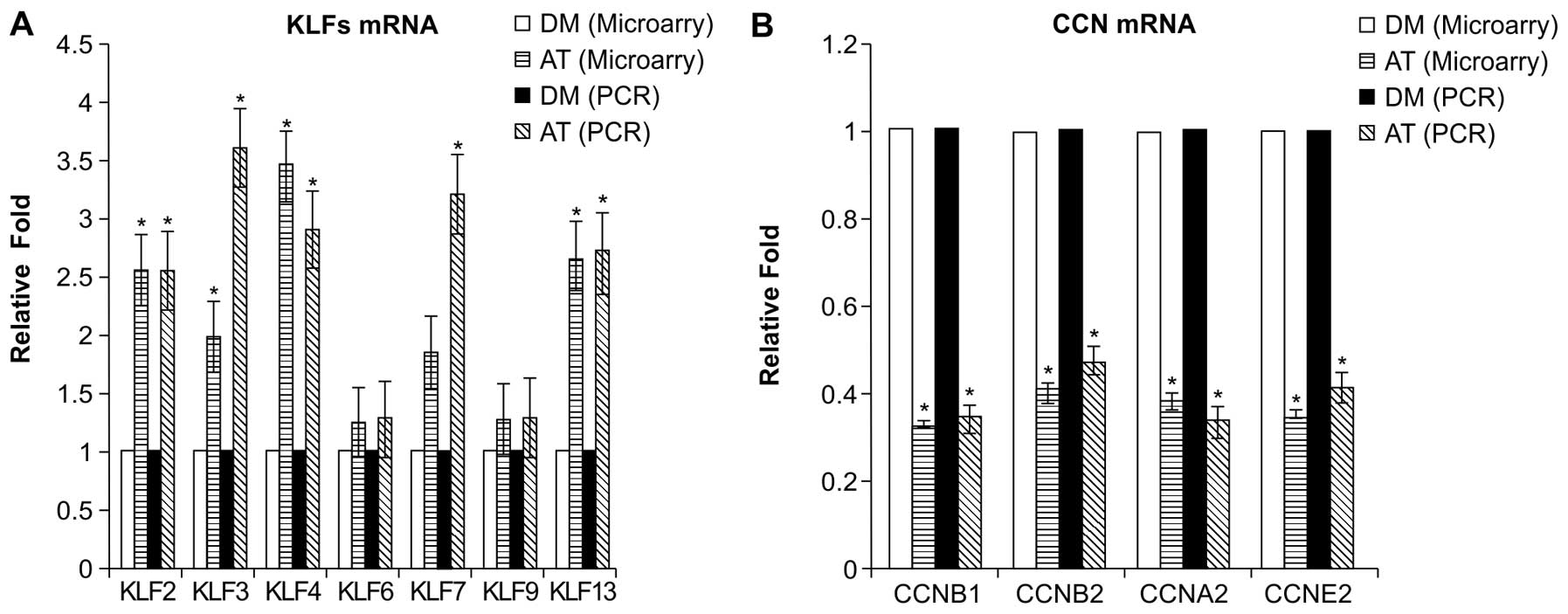|
1.
|
C SpampanatoS De MariaM
SarnataroSimvastatin inhibits cancer cell growth by inducing
apoptosis correlated to activation of Bax and down-regulation of
BCL-2 gene expressionInt J Oncol40935941201222134829
|
|
2.
|
RH SamsonDG NairInfluence and critique of
the JUPITER Trial (Statins v no statins for primary prevention of
cardiovascular events in patients with normal lipids and elevated
C-reactive protein)Semin Vasc
Surg24172179201110.1053/j.semvascsurg.2011.10.00522153029
|
|
3.
|
PM RidkerE DanielsonFA FonsecaRosuvastatin
to prevent vascular events in men and women with elevated
C-reactive proteinN Engl J
Med35921952207200810.1056/NEJMoa0807646
|
|
4.
|
AB RosseboTR PedersenK BomanIntensive
lipid lowering with simvastatin and ezetimibe in aortic stenosisN
Engl J Med35913431356200810.1056/NEJMoa080460218765433
|
|
5.
|
C MarelliC GunnarssonS RossStatins and
risk of cancer: a retrospective cohort analysis of 45,857 matched
pairs from an electronic medical records database of 11 million
adult AmericansJ Am Coll
Cardiol58530537201110.1016/j.jacc.2011.04.01521777752
|
|
6.
|
ZY ChenS RexCC TsengKruppel-like factor 4
is transactivated by butyrate in colon cancer cellsJ
Nutr134792798200415051827
|
|
7.
|
MS SimonCA RosenbergRJ
RodaboughProspective analysis of association between use of statins
or other lipid-lowering agents and colorectal cancer riskAnn
Epidemiol221727201210.1016/j.annepidem.2011.10.00622056480
|
|
8.
|
YC YangWF HuangLM ChuanIn vitro and in
vivo study of cell growth inhibition of simvastatin on chronic
myelogenous leukemia
cellsChemotherapy54438446200810.1159/00015866318824851
|
|
9.
|
K GauthamanCY FongA BongsoStatins, stem
cells, and cancerJ Cell
Biochem106975983200910.1002/jcb.2209219224538
|
|
10.
|
M UpretiNA KoonceL HenningsTC ChambersRJ
GriffinPegylated IFN-alpha sensitizes melanoma cells to
chemotherapy and causes premature senescence in endothelial cells
by IRF-1 mediated signalingCell Death
Dis1e67201010.1038/cddis.2010.4321197417
|
|
11.
|
A SubramanianP TamayoVK MoothaGene set
enrichment analysis: a knowledge-based approach for interpreting
genome-wide expression profilesProc Natl Acad Sci
USA1021554515550200510.1073/pnas.050658010216199517
|
|
12.
|
National Institute of Allergy and
Infectious DiseasesDAVID Bioinformatics Resources 6.7. http://david.abcc.ncifcrf.gov. Accessed January 13,
2012
|
|
13.
|
J LambED CrawfordD PeckThe Connectivity
Map: using gene-expression signatures to connect small molecules,
genes, and diseaseScience31319291935200610.1126/science.1132939
|
|
14.
|
Broadband InstituteMolecular Signatures
Database http://www.broadinstitute.org/gsea/msigdb/indexjsp.
Accessed January 13, 2012
|
|
15.
|
Broadband InstituteMap C. www.broadinstitute.org/cmap. Accessed January 13,
2012.
|
|
16.
|
Stanford UniversityIndex of cancer
modules. http://robotics.stanford.edu/~erans/cancer/modules.
Accessed January 13, 2012
|
|
17.
|
H TaniguchiFV JacintoA VillanuevaSilencing
of Kruppel-like factor 2 by the histone methyltransferase EZH2 in
human cancerOncogene3119881994201210.1038/onc.2011.38721892211
|
|
18.
|
JL YoriDD SeachristE JohnsonKruppel-like
factor 4 inhibits tumorigenic progression and metastasis in a mouse
model of breast cancerNeoplasia13601610201121750654
|
|
19.
|
M ZimmerJ LambBL EbertThe connectivity map
links iron regulatory protein-1-mediated inhibition of
hypoxia-inducible factor-2a translation to the anti-inflammatory
15-deoxy-delta12,14-prostaglandin J2Cancer
Res7030713079201010.1158/0008-5472.CAN-09-287720354189
|
|
20.
|
YC LinJH LinCW ChouYF ChangSH YehCC
ChenStatins increase p21 through inhibition of histone deacetylase
activity and release of promoter-associated HDAC1/2Cancer
Res6823752383200810.1158/0008-5472.CAN-07-580718381445
|
|
21.
|
K PandyaD DonzeTM TownesNovel
transactivation domain in erythroid Kruppel-like factor (EKLF)J
Biol Chem27682398243200110.1074/jbc.M00845720011092887
|
|
22.
|
AP FunnellCA MaloneyLJ ThompsonErythroid
Kruppel-like factor directly activates the basic Kruppel-like
factor gene in erythroid cellsMol Cell
Biol2727772790200710.1128/MCB.01658-0617283065
|
|
23.
|
B HuangYT AhnL McPhersonC ClaybergerAM
KrenskyInteraction of PRP4 with Kruppel-like factor 13 regulates
CCL5 transcriptionJ
Immunol17870817087200710.4049/jimmunol.178.11.708117513757
|
|
24.
|
E O’GradyH MulcahyC AdamsJP MorrisseyF
O’GaraManipulation of host Kruppel-like factor (KLF) function by
exotoxins from diverse bacterial pathogensNat Rev
Microbiol5337341200717435789
|
|
25.
|
S FischS GrayS HeymansKruppel-like factor
15 is a regulator of cardiomyocyte hypertrophyProc Natl Acad Sci
USA10470747079200710.1073/pnas.070198110417438289
|
|
26.
|
AM PilonDG NilsonD ZhouAlterations in
expression and chromatin configuration of the alpha
hemoglobin-stabilizing protein gene in erythroid Kruppel-like
factor-deficient miceMol Cell
Biol2643684377200610.1128/MCB.02216-0516705186
|
|
27.
|
SP WangHJ ZhouXP ChenLoss of expression of
Kruppel-like factor 6 in primary hepatocellular carcinoma and
hepatoma cell linesJ Exp Clin Cancer Res26117124200717550140
|
|
28.
|
S ChanchevalapMO NandanBB
McConnellKruppel-like factor 5 is an important mediator for
lipopolysaccharide-induced proinflammatory response in intestinal
epithelial cellsNucleic Acids
Res3412161223200610.1093/nar/gkl014
|
|
29.
|
S MukaiT HiyamaS TanakaM YoshiharaK
ArihiroK ChayamaInvolvement of Kruppel-like factor 6 (KLF6)
mutation in the development of nonpolypoid colorectal
carcinomaWorld J
Gastroenterol1339323938200710.3748/wjg.v13.i29.393217663506
|
|
30.
|
MC VelardeZ ZengJR McQuownFA SimmenRC
SimmenKruppel-like factor 9 is a negative regulator of
ligand-dependent estrogen receptor alpha signaling in Ishikawa
endometrial adenocarcinoma cellsMol
Endocrinol2129883001200710.1210/me.2007-0242
|
|
31.
|
ZY ChenX WangY ZhouG OffnerCC
TsengDestabilization of Kruppel-like factor 4 protein in response
to serum stimulation involves the ubiquitin-proteasome
pathwayCancer
Res651039410400200510.1158/0008-5472.CAN-05-205916288030
|
|
32.
|
XL ZhangD ZhangFJ MichelJL BlumFA SimmenRC
SimmenSelective interactions of Kruppel-like factor 9/basic
transcription element-binding protein with progesterone receptor
isoforms A and B determine transcriptional activity of
progesterone-responsive genes in endometrial epithelial cellsJ Biol
Chem2782147421482200310.1074/jbc.M212098200
|
|
33.
|
JL ShieZY ChenMJ O’BrienRG PestellME LeeCC
TsengRole of gut-enriched Kruppel-like factor in colonic cell
growth and differentiationAm J Physiol Gastrointest Liver
Physiol279G806G814200011005769
|
|
34.
|
AM GhalebBB McConnellMO NandanJP KatzKH
KaestnerVW YangHaploinsufficiency of Kruppel-like factor 4 promotes
adenomatous polyposis coli dependent intestinal tumorigenesisCancer
Res6771477154200710.1158/0008-5472.CAN-07-130217671182
|
|
35.
|
SL SchoberCT KuoKS SchlunsL LefrancoisJM
LeidenSC JamesonExpression of the transcription factor lung
Kruppel-like factor is regulated by cytokines and correlates with
survival of memory T cells in vitro and in vivoJ
Immunol16336623667199910490960
|
|
36.
|
M IskarM CampillosM KuhnLJ JensenV van
NoortP BorkDrug-induced regulation of target expressionPLoS Comput
Biol6e1000925201010.1371/journal.pcbi.1000925
|
|
37.
|
H GuanL XieF LeithauserKLF4 is a tumor
suppressor in B-cell non-Hodgkin lymphoma and in classic Hodgkin
lymphomaBlood11614691478201010.1182/blood-2009-12-25644620519630
|
|
38.
|
C BureauN HanounJ TorrisaniJP VinelL
BuscailP CordelierExpression and Function of Kruppel Like-Factors
(KLF) in CarcinogenesisCurr
Genomics10353360200910.2174/13892020978892101020119532
|
|
39.
|
E ChnariJS NikitczukKE UhrichPV
MogheNanoscale anionic macromolecules can inhibit cellular uptake
of differentially oxidized
LDLBiomacromolecules7597603200610.1021/bm050690516471936
|



